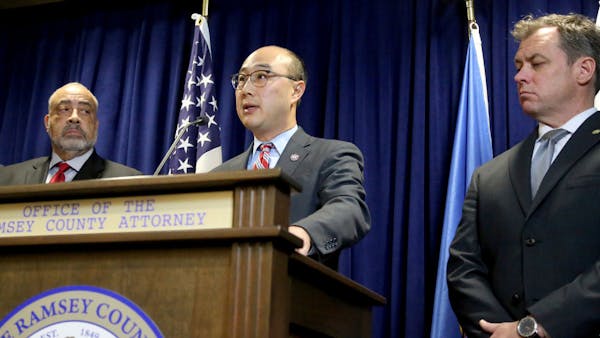Jeronimo Yanez joins a growing list of U.S. police officers charged in fatal on-duty shootings, but the rise in prosecutions doesn't guarantee he'll do time. Convicting officers of murder or manslaughter is extremely difficult, specialists in police misconduct say.
The charges against the 28-year-old St. Anthony police officer are unprecedented in recent Minnesota history. Nationally, of the 78 state and local officers charged since 2005 with murder or manslaughter after fatally shooting someone while on duty, just 27 have been convicted, according to Philip Stinson, a Bowling Green State University criminologist and former cop who tracks the cases. About 22 cases, including Yanez's, are pending.
That's a very small number of prosecutions and convictions considering that on-duty officers shoot and kill an estimated 900 to 1,000 people each year, Stinson said.
"These are very rare events," he said.
Stinson's research shows a notable rise in prosecutions since 2014, when a police officer fatally shot Michael Brown, an unarmed black teenager in Ferguson, Mo. Brown's death sparked an explosion of anger and concern over police use of force in the United States.
So far this year, authorities have charged 12 law enforcement officers in on-duty shooting deaths, and last year they charged 18. By contrast, from 2005 to 2014, a total of 48 were charged — an average of about 5 a year.
Stinson attributes the rise to intense public scrutiny of the killings and the widespread use of smartphone and police video.
"What's changed is that we now have more video evidence and the police no longer solely own the narrative," Stinson said. "A dead man can't talk."
It's too early to tell whether the recent uptick in prosecutions is a trend or a turning point, Stinson said. What he does know, he said, is that just one of the 27 convictions since 2005 was for murder. Most were for manslaughter, one was for reckless endangerment, he said.
James Ashby, a police officer in Rocky Ford, Colo., was convicted of second-degree murder for shooting an unarmed Jack Jacquez in the back in 2014 after following him into Jacquez's mother's house. Ashby was sentenced last month to 16 years in prison.
The most recent conviction was also last month, when a jury in California convicted former Paradise police officer Patrick Feaster of involuntary manslaughter. Feaster, who has asked for a new trial, fatally shot Andrew Thomas as Thomas crawled from a Toyota 4Runner after crashing it while being pursued by Feaster.
Stinson noted that 14 of the 27 convictions were decided by a jury, the others were the result of guilty pleas.
Getting a conviction at a jury trial is very difficult, he said.
"It appears when [jurors] get behind closed doors, they're not willing to second-guess the split-second, life-or-death decision officers make in a street encounter," Stinson said.
Prosecutors also face other hurdles in winning convictions in officer-involved shootings, such as proving criminal intent in murder cases. Judges, too, have a deep-rooted bias in favor of law enforcement, said Samuel Walker, professor emeritus in criminal justice at the University of Nebraska-Omaha.
Because Yanez was charged with second-degree manslaughter, not murder, prosecutors must prove culpable negligence, a lower legal hurdle than criminal intent. Under state law, culpable negligence is when someone creates "an unreasonable risk" and conscious chance of causing death or great bodily harm to someone. "Gross negligence coupled with the element of recklessness," is how the Minnesota Supreme Court defined it in a 2009 case.
Walker said he thinks the impact of prosecuting criminal cases on policing will be "limited" and doesn't expect the number of prosecutions for officer-involved shootings to greatly increase.
The de-escalation tactics police chiefs are pushing will have a more profound influence on changing policing than more prosecutions, Walker said. He pointed to the new guiding principles the Police Executive Research Forum issued last January, which focus on the use of more respectful policing and less use of force.
The manifesto urges law enforcement agencies to set tougher standards for use of force, and move beyond Graham vs. Connor, the landmark 1989 Supreme Court decision that set the "objectively reasonable" guiding standard.
"The fact that they were willing to say, 'We can do better than what the Supreme Court says,' says they are thinking creatively," he said.
Jennifer Bjorhus • 612-673-4683

Minneapolis reaches $150k settlement with eyewitness of George Floyd's murder

Israel-Hamas war creates 'really fraught times' at Minn. colleges

Rare and fatal brain disease in two deer hunters heightens concerns about CWD

